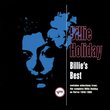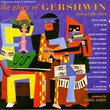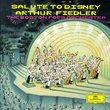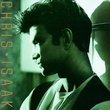| All Artists: Magnus Fiennes, Lara St. John, Yoad Nevo, Matthew Sharp, Robbie Jacobs, Christopher Laurence, Christopher Lawrence, Andrew Findon, Anna Noakes, Phil Todd Title: Re: Bach Members Wishing: 0 Total Copies: 0 Label: Sony Release Date: 5/25/2004 Genres: Special Interest, Classical Styles: Opera & Classical Vocal, Chamber Music, Historical Periods, Classical (c.1770-1830) Number of Discs: 1 SwapaCD Credits: 1 UPCs: 827969302224, 5099708997328, 5099708997304 |
Search - Magnus Fiennes, Lara St. John, Yoad Nevo :: Re: Bach
 | Magnus Fiennes, Lara St. John, Yoad Nevo Re: Bach Genres: Special Interest, Classical
Two things must be said immediately: (1) Lara St. John is a spectacular violinist and (2) any resemblance between the music on this disc and that of J.S. Bach is largely incidental. True, Bach himself freely arranged and r... more » |
Larger Image |
CD DetailsSynopsis
Amazon.com Two things must be said immediately: (1) Lara St. John is a spectacular violinist and (2) any resemblance between the music on this disc and that of J.S. Bach is largely incidental. True, Bach himself freely arranged and re-used his works in other contexts, and this is often cited to justify recasting bits and pieces of them in a highly idiosyncratic, often experimental style totally alien to his own. However, though St. John claims that she and her collaborators have "a huge respect for Bach's music," it is difficult to resist the impression that this is simply a launching-pad for an unabashed ego-trip. Her tone contrasts strangely with the electronic instruments and sounds too close to the microphone, but seems an oasis of natural beauty; one longs for its reappearance whenever she rests. She gets only a few chances to display her virtuosity; one of them is the finale of the A-minor unaccompanied sonata, the sole selection originally written for violin (inexplicably called "Bombay Minor"). St. John plays it brilliantly, but toward the end a tabla joins her with rhythms that seem unconnected to her part. The music generally is a teaser. Some melodies are unfamiliar, some famous, but often impossible to identify in these unaccustomed surroundings. The opening selection's title, "Goldberg 2," presumably indicates a connection with the "Goldberg" Variations that defies discovery, while the last selection is unmistakable: the "Badinerie" from the B-minor Suite. St. John plays the solo flute part, again not fast but brilliantly; she rests while the group engages in far-flung modulations. In two pieces St. John plays a duet with herself, one violin sounding darker than the other and just different enough to create the illusion of two players, and there is a lovely, simple duet for violin and cello that actually sounds like Bach. Now will the real Johann Sebastian please stand up? --Edith Eisler Similarly Requested CDs
|
CD ReviewsLost it. richard_best | Oberlin, OH USA | 05/30/2004 (1 out of 5 stars) "Selling classical music with sex has never been something I cared for. And St. John always had very questionable CD covers. Nevertheless, I always had to admit that when it came to the music itself, it sounded like she had real integrity. The playing was always first class, with lots of personality and quite unique. Now, she just shattered all this. This CD has no integrity and no music, lowering herself to the level of corny artists like Linda Brava or what have you. Would she soon be posing for Playboy as well? ... Thank god there are still violinists like Hilary Hahn and Sarah Chang around to save the classical grace." Poor Lara! Ann Volpe | Pittsburgh, PA | 12/12/2004 (1 out of 5 stars) "Poor Lara! For years, she tried everything to get noticed. First it was the nude cover of her first album, then the tough girl image of the second, afterwards the sexy "bad girl" cover of the third. Still, some people thought she was also a worthwhile violinist and some even liked her fresh attitude. In this last cd, however, she exposes not her body, for a change, but her lack of musical integrity or depth. It's no wonder this cd is already widely considered a big flop. There's little good to say about it. Although some ignorant, or self-proclaimed "progressive thinkers" get lured by it's silly effects, I highly advise to skip this one. Ever since 'Switch on Bach' was made, over 30 years ago, countless albums with variations on the subject of Bach were produced. We've already heard it all. There's nothing new here. There are so many better albums out there that will "expand your horizons" without insulting your intelligence or your sound musical taste." When an artist sell out and loses her soul - what a shame! Ann Volpe | 05/30/2004 (1 out of 5 stars) "I wanted to disagree with the previous reviewer, as I used to admire this artist. But no longer. Unfortunately, after listening to this CD, I could not agree more. This is a perfect example of someone selling their soul, probably for the hopes of financial success. Quite sad, actually. I have heard bad new-age pop before, but why did she have to do it to Bach? There is very little Bach in it, but what is recognizable as Bach is pretty repulsive. What baffles me most, is why there is so little violin in it? That is just plain stupid!"
|

 Track Listings (15) - Disc #1
Track Listings (15) - Disc #1







